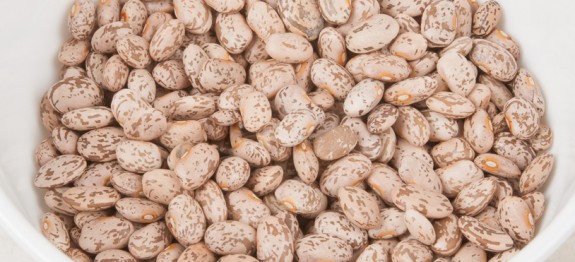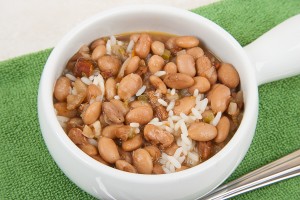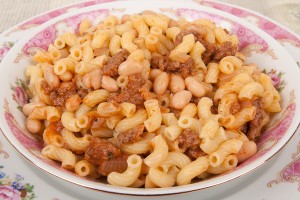Cooking Dry Beans
Advantages of Dry Beans
Canned beans are convenient, but there are several reasons for buying and cooking dry beans instead of canned beans:
- Lower Cost
- More Variety
- Significantly Less Sodium
- BPA Free
With dry beans you get just beans and no chemicals, additives or preservatives.
Beans are an excellent source of protein and fiber. Their high protein makes beans a good low saturated fat substitute for red meat and the fiber can make you feel full longer reducing appetite naturally. One cup of dry beans has less than 1 gram of saturated fat and about 40 grams of protein.
The usual reason for avoiding dry beans is the long cooking time. Dry beans can take 2 to 4 hours to cook. Soaking reduces cooking time by about 50 percent. Several hours of cooking is significant compared to opening and heating a can of beans. But don’t let the cooking time intimidate you. It is no longer than cooking a good stew and dry beans only require occasional stirring during slow the simmering process. With a good quality pan, stirring the beans about every 30 minutes is all you need.
To Soak or Not to Soak
That is the question. Some cookbooks recommend eliminating overnight soaking. Omitting the soak adds an hour or two to the cooking time, but it is one less step.
If you wake up with a craving for a recipe requiring dry beans and don’t have time to soak overnight you can use the 2-hour soak listed below.
Flatulence and Soaking
Flatulence better know as gas is the main reason for soaking beans. Beans can cause gas. Sometimes uncomfortable or embarrassing gas. Who wants to recreate the scene from the movie Blazing Saddles?
Soaking beans reduces the gas producing compounds in beans. The longer you soak beans, over night is best, and the more often you change the soak water the less likely you’ll find yourself expelling unpleasent gas created in your intestines.
Soaking beans may not eliminate all gas. All high fiber foods can produce some gas. The less fiber you have in your diet the greater your chances of having gas if you significantly increase the amount of fiber in your diet. By slowly increasing the amount of fiber in your diet, you should experience little or no gas.
Flatulence is natures way of relieving potential damaging gas pressure in your stomach and large intestines. Without this safety valve, your stomach or intestine can rupture with serious or fatal consequences.
2-Hour Quick Soak Method
You can decrease soak time form overnight to 2 hours.
In a sauce pan large enough to hold the beans and enough water to cover the beans by 1 to 2 inches:
- Place the beans in the pan
- Cover beans with boiling water
- Cover the pan
- Soak at least 2 hours
To reduce the gas producing compounds, drain and add hot water every 30 minutes.
Do Not Cook Beans Using the Soak Water
Gas producing compounds of dry beans are in the soak water. Draining and rinsing the beans eliminates the compounds that leached out during soaking. Cook beans using the soak water re-introduces the gas producing compounds so the only benefit you get from soaking is reduced cooking time.
If you are concerned about or want to reduce gas from dry beans, drain the soak water using a sieve or colander, rinse the beans and use them in your recipe.
Substituting Dry Beans for Canned Beans
1 15-ounce can of beans equals:
- 1/2 cup dry beans, before cooking
- 1 1/2 cups beans, after cooking
1 pound dry beans equals:
- 2 cups dry beans, before cooking
- 6 cups beans, after cooking
- 4 15-ounce cans of beans
For most dry beans, 1 cup dried beans equals 3 cups cooked beans.
Recipes using Dry Beans

Baked Beans and Mixed Vegetables
Recipe coming soon.

White Bean Chili
Recipe coming soon.
Happy Cooking!




